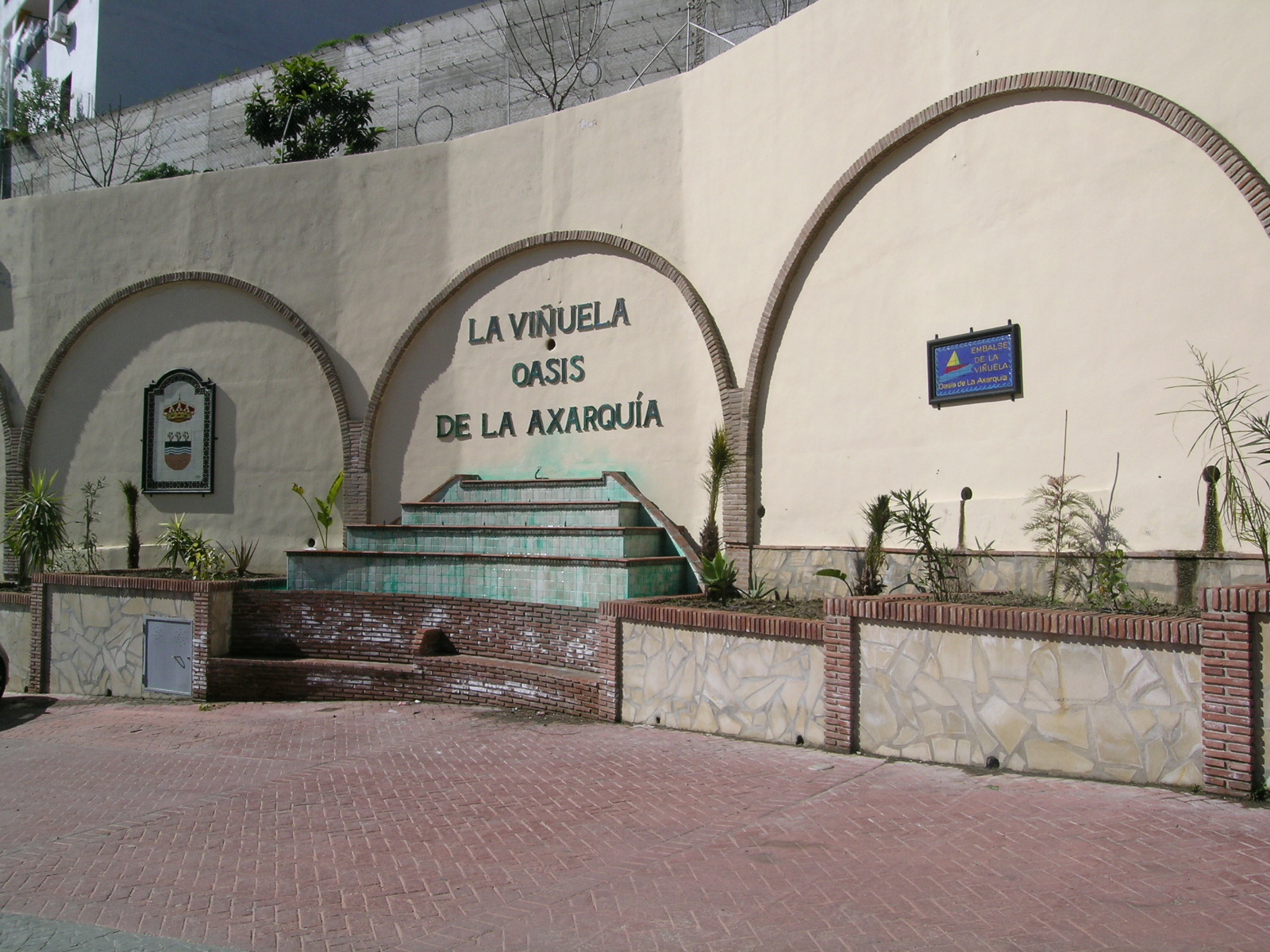
The name Viñuela these days makes people think of the lake or reservoir and surrounding areas but La Viñuela the typical little white Spanish village is from where the lake took its name. La Viñuela (the little vineyard) nestles in a little valley, 131 m above sea level alongside a shady stream with its long and thin shape. It's part of the Axarquía route of Olive Oil and Mountains and is just 19 km from the coast at Torre del Mar.
Apart from the 16th century parish church of San José, the most notable building in the village is La Venta La Viña which in days gone by used to be a watering hole for weary travelers making their way up to Granada through the Boquete de Zafarraya. The sign outside the building says that the inn was built at the crossroads of the Granada and Antequera cattle routes to serve the Muleteers who used these routes. It was one of the first houses in the village. Now it's been completely renovated and enlarged and is a lovely new restaurant serving very good, wholesome food.
Even though this area has proved to be one of the first for human settlement, as a village La Viñuela is probably the newest in the Axarquía having been founded in the 18th century. Lucas García del Rey was its first mayor and he took office in 1764.
The easiest way to get to the village is to follow signs for Viñuela or Zafarraya when you leave the motorway at Vélez-Málaga and turn right just before the reservoir. Once on the road leading to the Boquete de Zafarraya, which you can see rising high above you, there will be a sign to La Viñuela. Don't follow the sign to Hotel Viñuela as it's in the opposite direction.
The best way to explore the village is to park in the shade of the trees by the stream and walk up through the main street. Before going anywhere, visit the park where you can use the adult exercise equipment or play pétanque, there is also a children's playground and some old mill machinery which is interesting to look at. Walking up the main street you find women sitting in their doorways or on their steps chatting to each other or just watching passersby. Further up is the Church of San José situated in a little flower filled courtyard amongst some houses, right opposite the new Venta La Viña. The church itself would go unnoticed as you walk up the hill if it wasn't for its belfry tower which was added in the 18th century. Just behind the church is a fountain at the entrance to a bar where the street widens a little. There are signs to different walks dotted about the streets and the area attracts ramblers and bird watchers. Further up the street are the newly built town hall and health centre.
Work on building the lake or pantano wasn't started until 1981 and contrary to popular belief there is no submerged village complete with church steeple below the water. Since it was first filled with water from the rivers Salia, Benamargosa, Bermuza, Rubite and the Madre del Llano de Zafarraya stream, El Pantano has become the largest reservoir in Málaga with a maximum depth of 230 m. It has become so important to the local community that it is now part of the municipalcoat of arms and La Viñuela village has built a new monument to it complete with fountain.